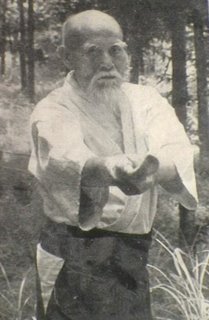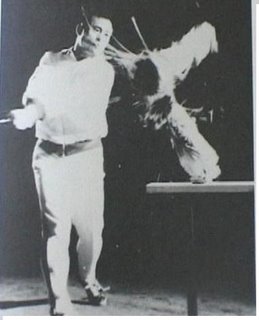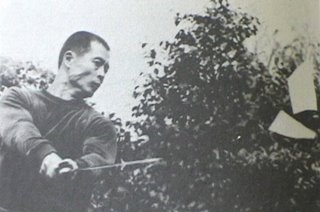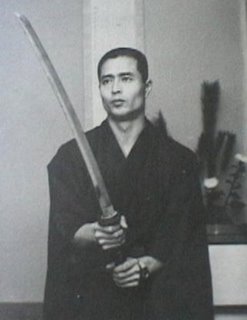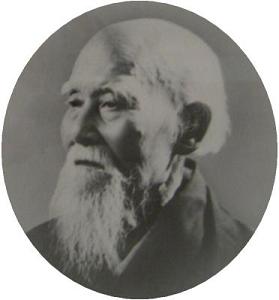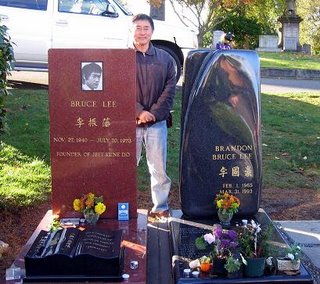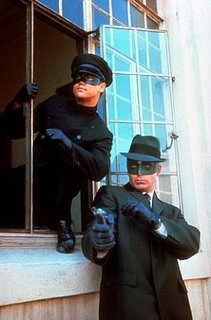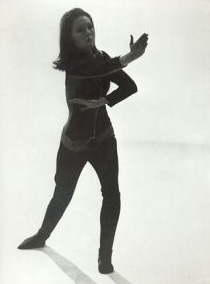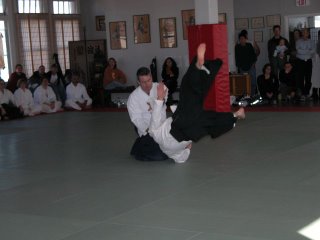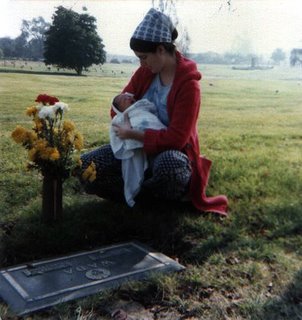The full moon cut and Aikido
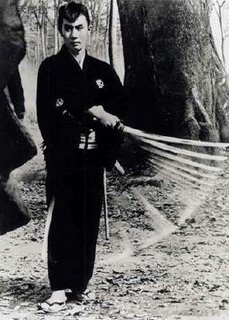 Continuing with the topic of the sword but in a more fanciful way, we come to the topic of Nemuri Kyoshiro. He is a swordsman played in a series of movies by the wonderful actor, Ichikawa Raizo. These were in turn based upon a series of novels written by Shibata Renzaburo. Instead of being a samurai, he is a "burai no to" or a rogue swordsman. So technically he does not have to subscribe to the samurai code of ethics. He is also a social outcast, half-Japanese, half-Portuguese. To top things off, he was conceived as part of a Satanic ritual. The stories play upon the fact that while the character is very dark and NOT a samurai, he lives in a very corrupt age in which all codes of honor are side by side with hopeless hypocrisy. He despises this lack of sincerity and constantly winds up protecting those(the elderly, children, women) that the system wants to destroy for one reason or another.
Continuing with the topic of the sword but in a more fanciful way, we come to the topic of Nemuri Kyoshiro. He is a swordsman played in a series of movies by the wonderful actor, Ichikawa Raizo. These were in turn based upon a series of novels written by Shibata Renzaburo. Instead of being a samurai, he is a "burai no to" or a rogue swordsman. So technically he does not have to subscribe to the samurai code of ethics. He is also a social outcast, half-Japanese, half-Portuguese. To top things off, he was conceived as part of a Satanic ritual. The stories play upon the fact that while the character is very dark and NOT a samurai, he lives in a very corrupt age in which all codes of honor are side by side with hopeless hypocrisy. He despises this lack of sincerity and constantly winds up protecting those(the elderly, children, women) that the system wants to destroy for one reason or another.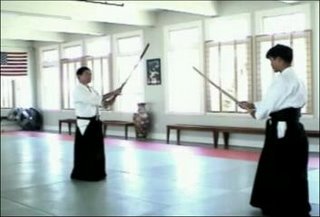
His sword style is that of the "Engetsu Sappo" or full moon cut. Faced with death he brazenly drops the tip of his sword down and begins to trace a circle, the symbol of the full moon. His enemies are told"Before the circle is complete you will be dead". Sometimes at the end of the movies his opponent will ask to see this cut, and Kyoshiro's response is that"It will be the last thing you see in this life".
I found this cut mesmerizing. It would be photographed slowly, and his sword would form a circle of strobe-like images. Beautiful, deadly, surreal.....When I was much younger this had a very profound effect on me. It seemed to me that this cut was a dimensional gateway that put the character in some sort of "no time no space" place.
And when I later got involved with Aikido, I wondered if there might be some connection..
When I arrived in Shingu, one of the questions I asked Hikitsuchi sensei was if there was some connection between what Osensei could do and Nemuri Kyoshiro's full moon cut. I remember that he broke out laughing so hard that I took that for a no. "Nemuri" means sleep, so when I developped the unfortunate habit of nodding off during his off the mat lectures on Aikido, Hikitsuchi sensei gave me the nickname "Nemuri Jack". Hikitsuchi sensei would constantly talk about the hang-ups a person had that would prevent him or her from acheiving a deep shugyo(spiritual practice). I asked Mary Heiny what mine were and she replied,"Sensei just thinks you're hung up on Nemuri Kyoshiro!"
I had some vindication when Tojima sensei took me aside and told me that sometimes when he attacked the founder, Osensei's movement made his body seem like a series of strobe-like images and he couldn't be touched. "You'd better believe that when Osensei moved it was like the Engetsu Sappo(full moon cut)," Tojima sensei said.
So what does the full moon cut represent? Since his sword is moving in a circle, Kyoshiro never faces his opponent in a set or static position. The cut seems to have a fatal draw where the opponent is compelled to attack before the circle is complete.
Even though the sword leaves the standard centerline position, it is obvious that Kyoshiro, while giving the illusion of an opening, is, in fact, not open at all. And the whole thing gives him a sense that there is something magical about him and his style.
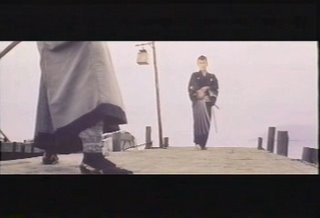
I sometimes play around with the concepts in class. You can check a short sequence out . Ichikawa Raizo and Osensei share one thing in common. They both passed away in 1969.
